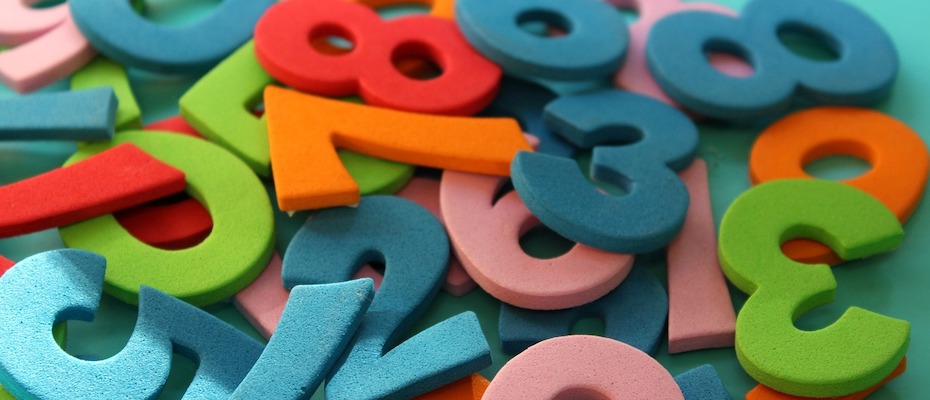Book Review: The Number Sense

Book author: Stanislas Dehaene.
Coffee rating: ☕☕☕ (3/3) *
Star rating: ⭐⭐ (2/3)
The Number Sense is written by Stanislas Dehaene, a French neuroscientist who has conducted research into cognition and learning across his career. He has authored numerous books, including Reading in the Brain (2009) and How we Learn (2020).
The Number Sense was originally published in 1997, but in the final chapter of the revised and expanded edition, Dehaene dedicates a chapter to updating the findings of the original book.
What is the number sense?
Dehaene describes ‘the number sense’ as the innate cognitive ability to quickly approximate quantities, especially when comparing and contrasting. This process of comparison is more accessible to our cognitive faculties when the values of these quantities are further apart and therefore easier to distinguish. Perhaps unsurprisingly, our number sense is also more accurate for smaller quantities.
Research indicates that babies possess a rudimentary number sense, but around the age of 3 to 4 years old, numerical acuity begins to emerge in children as they begin to perceive quantities as discreet quantifiable values rather than just approximations. Despite evidence indicating the number sense exists to varying degrees in different animal species, no other creature is able to make this quantitative cognitive leap.
The unique human capacity for language appears to play an instrumental role in this cognitive leap, which together form the foundation of more sophisticated mathematical understanding. Dehaene takes us on a journey to explore how our acquisition of mathematical understanding faces a number of cognitive obstacles that we have to overcome. Simply put, learning maths is hard.
Overcoming evolutionary obstacles
In the context of evolutionary history, maths is a very recent cultural invention. Consequently, our brains have not evolved dedicated structures to process formal mathematics. Dehaene draws upon his neuronal recycling theory (which he explores in greater depth in the fascinating Reading in the Brain), to provide an explanation for how humans are able to learn and master mathematical operations.
Neuronal recycling involves our brain co-opting elements of our cognitive architecture which are functionally related to the perception and manipulation of quantity. The implication of this is that our brains are not primed by evolution to intuitively grasp formal mathematics. Our brain’s plasticity enables us to overcome this hurdle, but the process of overcoming this evolutionary deficit places significant cognitive demands on our growing brains as children.
Overcoming developmental obstacles
Dehaene also considers the influence of child and adolescent development on the acquisition of mathematical skills. One example is the role of executive function, a valuable cognitive asset when having to manage the discipline of mathematical thinking. However, due to the long maturation process of executive function, Dehaene observes that it is perhaps unsurprising many children and adolescents struggle with maths because their prefrontal cortex is not fully developed until early adulthood.
Even though such developmental facts are known to educational psychologists, the scope and scale of our work means it can be helpful to receive reminders that may reunite potentially disconnected or relationally obfuscated elements of knowledge relevant to our practice.
Overcoming cognitive obstacles
Our evolutionary history and developmental trajectory across childhood result in natural limitations to mathematical cognition, although there is considerable variation within these cognitive boundaries. Dehaene suggests that the variation of mathematical ability is significantly influenced by the extent to which mathematical skills are practiced and nurtured and the range of heuristics adopted by individuals to reduce the cognitive demands of performing calculations. But even the heuristics of prodigies have limits as the calculation speed of every human brain progressively reduces as mathematical operations become more complex.
As someone who struggled with maths throughout childhood, I find some comfort in that even the greatest mathematical minds eventually encounter the difficulties and frustrations that I remember all too well. As educational psychologists could this knowledge be used as a means to encourage those who are struggling and to demystify the apparent ease by which peers can access their mathematical education?
Overcoming unnecessary obstacles
Dehaene also critiques the obstacles that human systems create. One notable example is his frustration when children are required to memorise times tables. He argues that the process of retrieval and manipulation of numbers from memory places unnecessary demands on the developing processing speed of children. Due to our brain’s preference for learning by association, children can unintentionally default to more intuitive mathematical operations such as addition when performing multiplication tasks. The role of associative memory can therefore result in children disproportionately making errors, which can subsequently affect their mathematical confidence.
Dehaene argues that there needs to be less emphasis on memorisation by rote in the classroom and that tools such as calculators are used more widely to help children more easily rectify any incorrect default to associated memory when performing calculations. The implication is that by reducing such obstacles, an empowering enthusiasm for maths may be more easily fostered so children can better realise their mathematical potential over the long term.
The book is a bit old. Should I bother reading it?
Those of you who have done some basic maths will realise that The Number Sense was originally published over 25 years ago, and that the edition discussed here is 12 years old. Other books on mathematical cognition have since been published. Why choose this book over others?
My answer would be that despite its age, this book contained some helpful and important ideas to develop my understanding of mathematical cognition. Dehaene is a very able communicator and is adept at explaining complex ideas clearly without becoming unnecessarily simplistic. Herein lies its great strength.
My own experience of working with children with learning needs in schools is that concerns around language and literacy tend to dominate and maths can be relegated as a secondary academic concern. As a result, my own knowledge around mathematical cognition is not as strong when compared to language and literacy. This book has been helpful in redressing that imbalance. Perhaps it could help you do the same
* Introducing our ‘Coffee’ and ‘Star’ rating. Every 6am Book Club review that David writes will have two different ratings. You’ll be familiar with star ratings, and David’s ‘Coffee’ ratings are as follows:
☕ – a light read! Nice and straightforward.
☕☕ – not too challenging. You might have to stop and think in places.
☕☕☕ – Get the coffee on; you’re going to be thinking a lot with this one!



